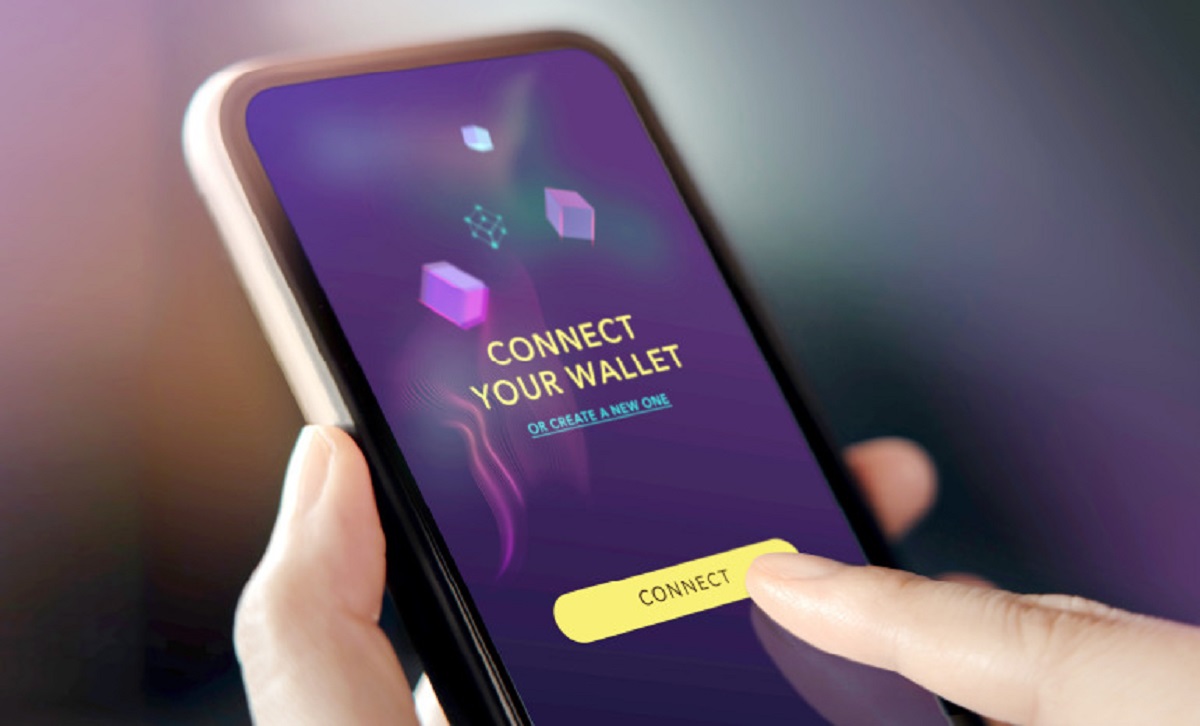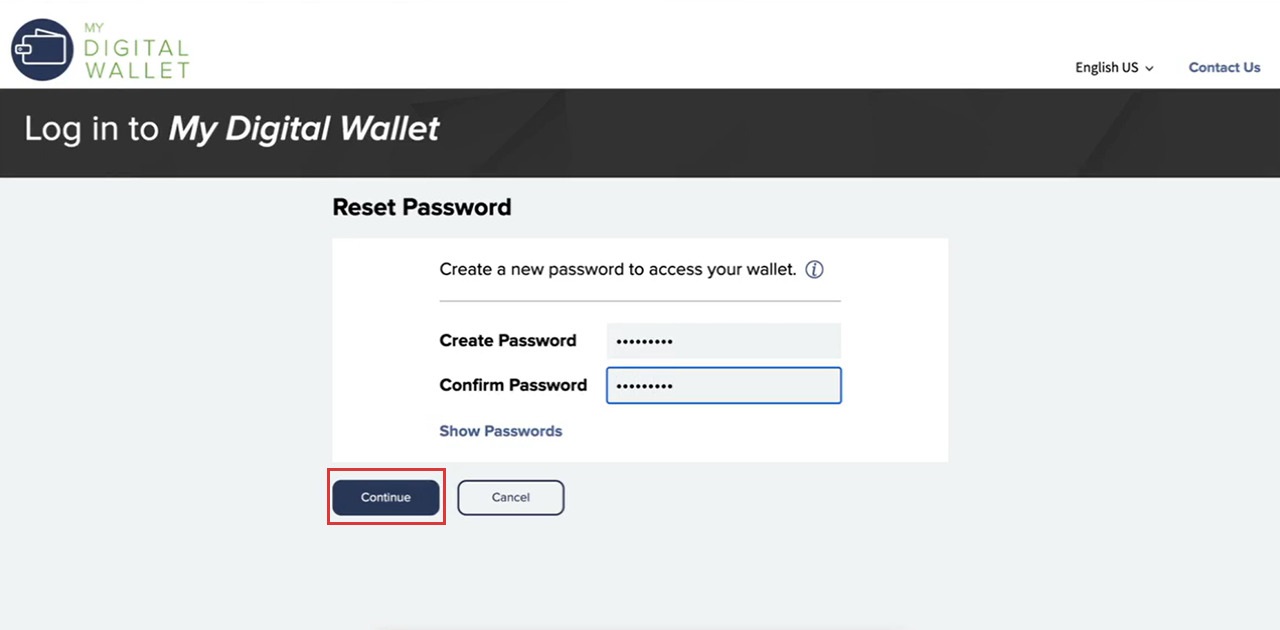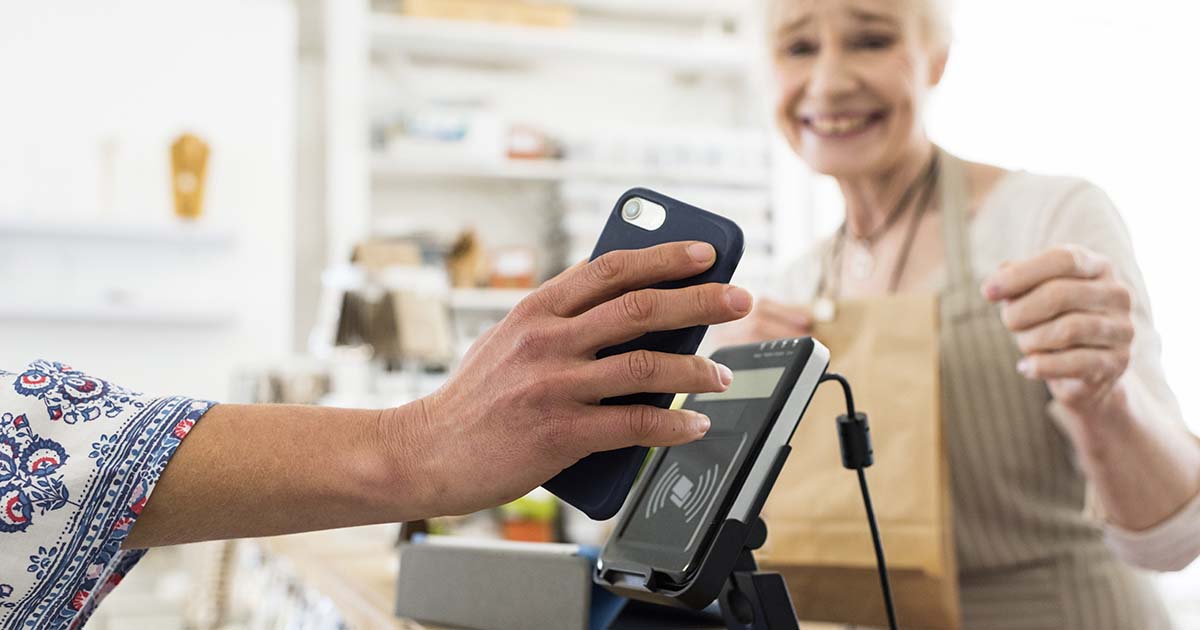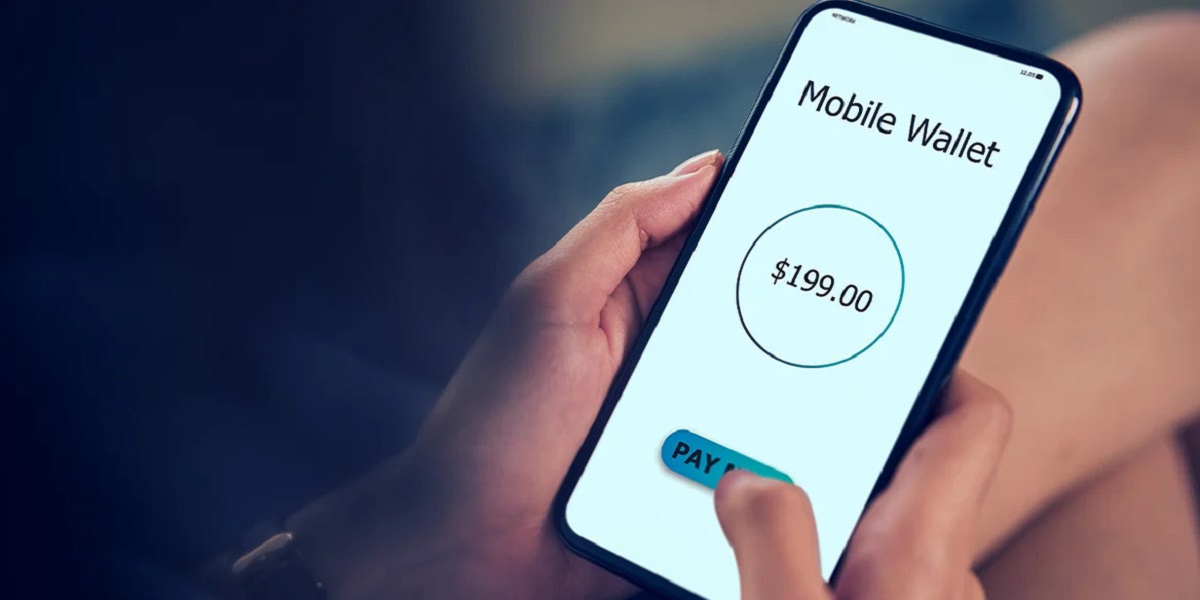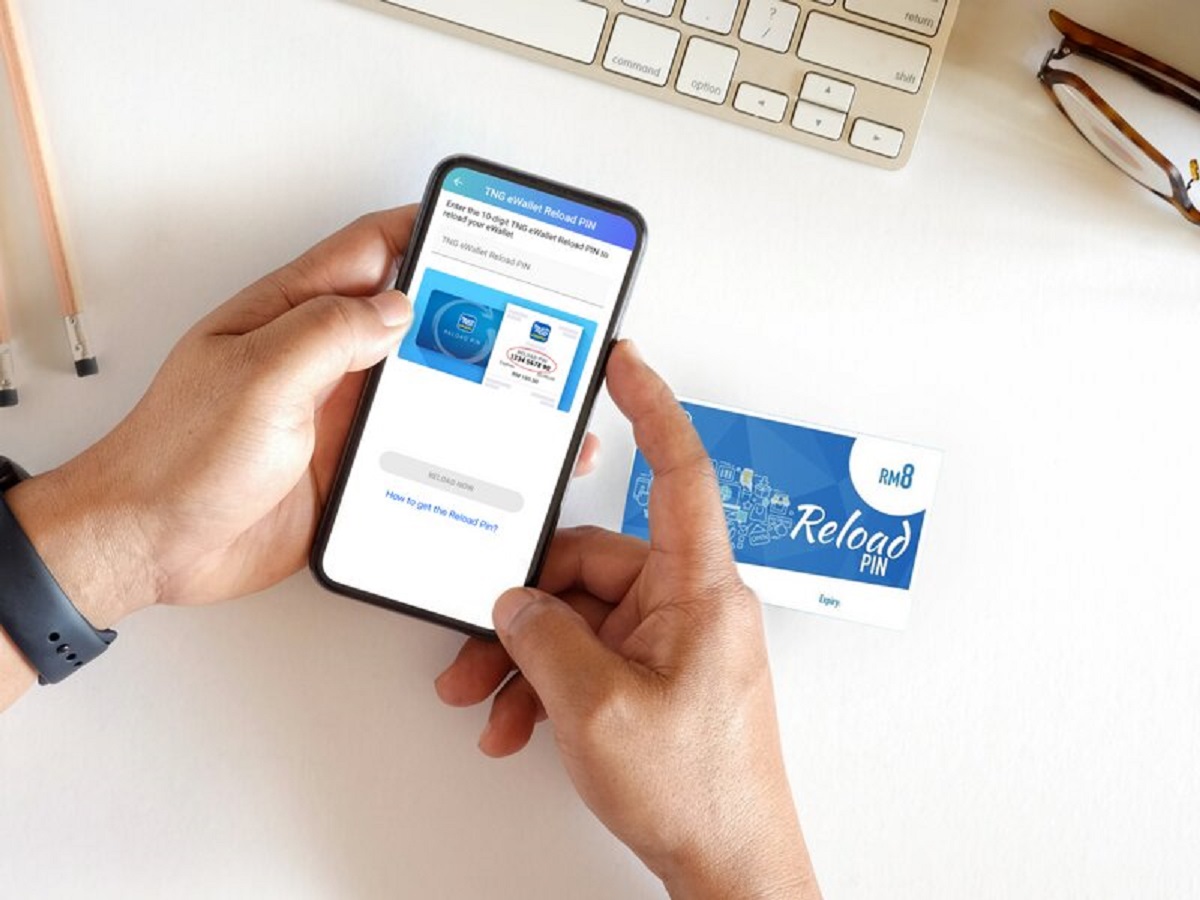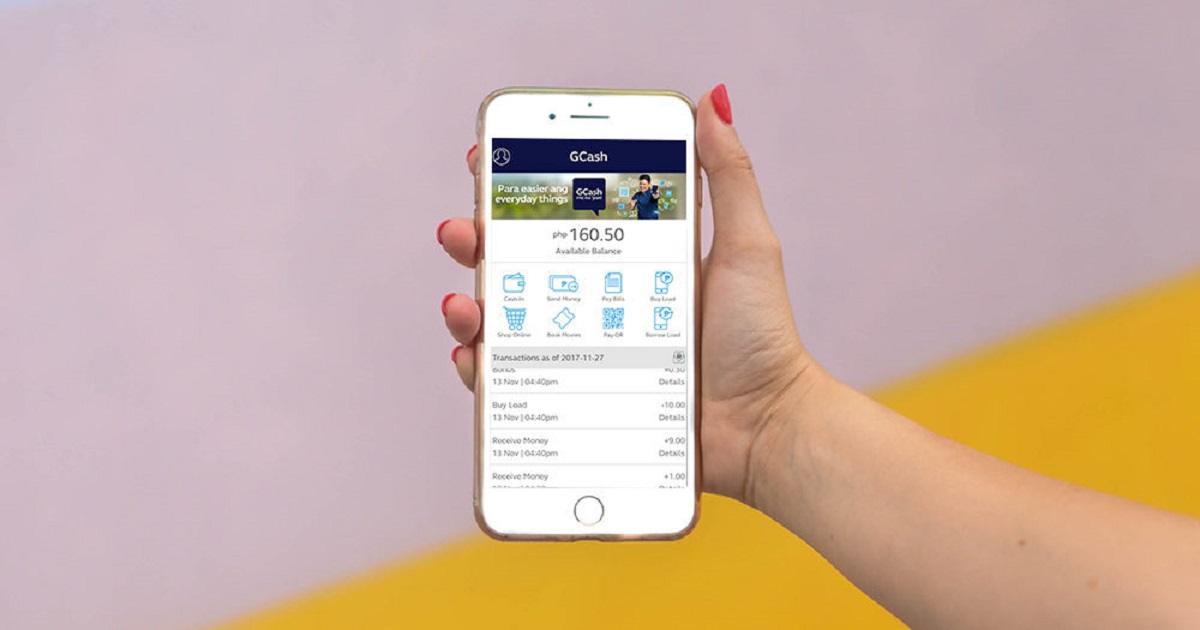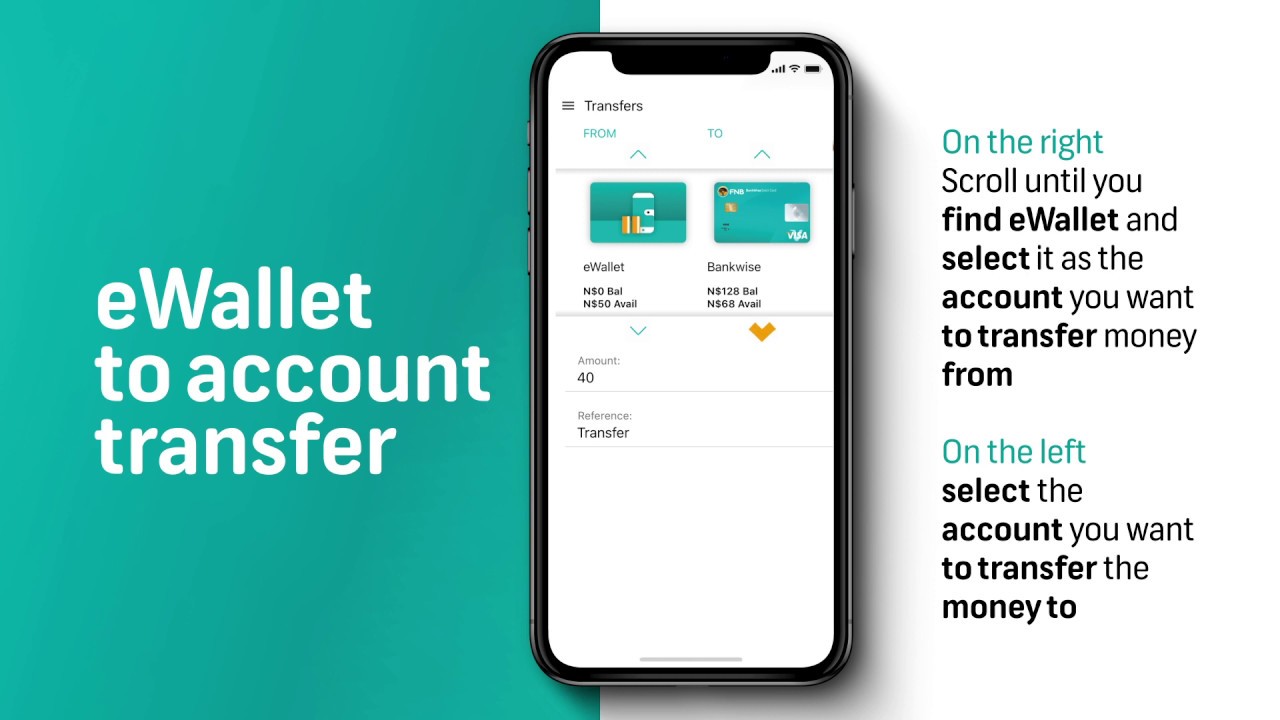Introduction
Introduction
Welcome to the digital age, where convenience and efficiency are at the forefront of our daily lives. With the rise of technology, traditional payment methods have undergone a major transformation, making way for the widespread adoption of e-wallets. An e-wallet, also known as a digital wallet or mobile wallet, is a virtual platform that allows you to store, manage, and make secure transactions with your money.
In the fast-paced world we live in, carrying around physical cash or cards can be a hassle. E-wallets offer a seamless and convenient solution by enabling you to make payments with just a few taps on your phone or clicks on your computer. Whether you’re shopping online, paying bills, or sending money to friends and family, an e-wallet provides a secure and efficient way to handle your financial transactions.
But why should you create an e-wallet? What are the benefits and advantages it offers compared to traditional payment methods? In this article, we will explore the world of e-wallets, guide you through the process of creating an e-wallet account, and provide tips to help you make the most of your digital wallet experience.
What is an E-wallet?
What is an E-wallet?
An e-wallet, also known as a digital wallet or mobile wallet, is a virtual platform that securely stores your financial information and allows you to make electronic transactions. It acts as a virtual substitute for your physical wallet, enabling you to manage and access your money digitally.
An e-wallet serves as an intermediary between your bank account or credit card and the merchants or service providers you wish to make payments to. It stores your payment information, such as card details or bank account numbers, and uses encryption and security measures to ensure the safety of your transactions.
One of the key features of an e-wallet is its convenience. It eliminates the need to carry physical cash or credit cards, and allows you to make payments anytime, anywhere, as long as you have an internet connection. With just a few clicks or taps, you can pay bills, make online purchases, transfer money to friends and family, and even withdraw cash from ATMs that support e-wallet withdrawals.
Additionally, e-wallets often offer features such as loyalty programs, discounts, and rewards, providing added benefits to users. Some e-wallets also support contactless payments, allowing you to make transactions by simply tapping your phone or payment device on a contactless payment terminal.
It is important to note that there are different types of e-wallets available in the market. Some e-wallets are provided by specific financial institutions or banks, while others are independent platforms that support multiple payment options. The choice of e-wallet depends on your individual preferences and the services offered by each provider.
Now that we have a basic understanding of what an e-wallet is, let’s explore the reasons why you should consider creating one and the factors to consider when choosing an e-wallet provider.
Why should you create an E-wallet?
Why should you create an E-wallet?
There are several compelling reasons why you should consider creating an e-wallet. Let’s take a closer look at some of the key benefits and advantages it offers:
1. Convenience:
Carrying around physical cash or multiple cards can be cumbersome. An e-wallet consolidates all your payment methods into a single digital platform, making it incredibly convenient to make transactions. With just a few taps on your phone or clicks on your computer, you can make payments, transfer funds, or even split bills with friends.
2. Accessibility:
E-wallets provide easy access to your funds at any time, anywhere. Whether you’re shopping online or making in-store purchases, as long as you have your smartphone or other device with internet access, you can effortlessly manage and use your e-wallet. This accessibility is especially valuable when you’re traveling or don’t have immediate access to physical payment options.
3. Security:
E-wallets prioritize security to protect your financial information. They use encryption technology, secure login protocols, and often require additional authentication methods such as PINs or biometric scans. By storing your payment information securely within the e-wallet, you reduce the risk of exposing sensitive data during transactions.
4. Speed and Efficiency:
E-wallets offer quick and seamless transactions. Unlike traditional payment methods that may involve manual input of payment details, an e-wallet eliminates the need for lengthy card numbers or bank account information. With just a few clicks, you can complete transactions in seconds, saving you time and effort.
5. Budgeting and Tracking:
Many e-wallets offer features that help you track and manage your expenses. You can set budget limits, categorize your spending, and receive detailed transaction records within the e-wallet app. This provides valuable insights into your spending habits and allows you to make more informed financial decisions.
6. Rewards and Offers:
Some e-wallets offer rewards programs, cashback offers, or exclusive discounts with partner merchants. By using your e-wallet for transactions, you can earn rewards or enjoy special deals, saving you money and enhancing your overall shopping experience.
With these benefits in mind, creating an e-wallet can simplify your financial transactions, provide added security, and enhance your overall payment experience. Now let’s dive into the factors you should consider when choosing the right e-wallet provider.
Choosing the right E-wallet provider
Choosing the right E-wallet provider
When it comes to selecting an e-wallet provider, it’s important to consider a few factors to ensure you choose the right one that aligns with your needs and preferences. Here are some key considerations:
1. Security:
Security should be your top priority when selecting an e-wallet provider. Ensure that the provider implements robust security measures such as encryption, two-factor authentication, and secure data storage. Look for trusted providers that have a proven track record of keeping user information safe.
2. Compatibility:
Check the compatibility of the e-wallet with your device and operating system. Ensure that it works seamlessly on the platforms you use, whether it’s iOS, Android, or web-based applications. This will ensure a smooth experience and easy access to your e-wallet.
3. Supported Payment Methods:
Consider the payment methods supported by the e-wallet provider. Look for flexibility in terms of linking bank accounts, credit cards, or even other e-wallets. The more options you have, the easier it will be to manage your finances within the e-wallet.
4. User Interface and Features:
Evaluate the user interface of the e-wallet app or website. Look for a clean and intuitive design that makes navigation and transactions easy. Additionally, consider the features offered by the e-wallet, such as barcode scanning, bill splitting, or peer-to-peer payments, that align with your individual needs.
5. Customer Support:
Check the availability and responsiveness of customer support for the e-wallet provider. Look for options to contact their support team in case you encounter any technical issues or have inquiries about your account. This will ensure a smooth user experience and prompt resolution of any problems.
6. Reputation and Reviews:
Do some research on the reputation and reviews of the e-wallet provider. Look for feedback from other users regarding the reliability, security, and overall usability of the e-wallet. This will give you insights into the experiences of existing users and help you make an informed decision.
By considering these factors, you can choose an e-wallet provider that offers the right features, security, and support to meet your financial needs. Once you’ve selected a provider, you can proceed with creating your e-wallet account and enjoying the benefits of a digital payment solution.
Creating your E-wallet account
Creating your E-wallet account
Now that you’ve decided to take advantage of the benefits an e-wallet offers, it’s time to create your own e-wallet account. The process may vary slightly depending on the e-wallet provider you choose, but here are the general steps to get you started:
1. Download the E-wallet App:
If the e-wallet you’ve chosen has a dedicated mobile app, head to your device’s app store and download it. Ensure that you’re downloading the official app from the legitimate provider to protect yourself from potential scams or fraudulent apps.
2. Register/Login to the E-wallet:
Open the app and either register for a new account or log in if you already have one. Fill in the required information, which may include your name, email address, and a secure password. Some e-wallet providers may also require you to verify your mobile number or email address for added security.
3. Set Up a Security PIN or Password:
After registering or logging in, you’ll be prompted to set up a security PIN or password. Choose a unique combination that is easy for you to remember but difficult for others to guess. This PIN or password will be used to access your e-wallet account and authorize transactions.
4. Link Your Phone Number:
Many e-wallets require you to link your phone number to your account. This helps ensure the security of your account and enables you to receive important notifications or confirmations regarding your transactions. Follow the instructions provided to verify your phone number.
5. Add Personal Information:
Some e-wallet providers may require additional personal information for identity verification purposes. This may include your full name, date of birth, and address. Input the required details accurately to ensure smooth account setup.
6. Verify Your Identity:
As part of the registration process, certain e-wallet providers may implement identity verification procedures. This can involve submitting identification documents such as a passport or driver’s license. Follow the instructions provided by the e-wallet app to complete the verification process, if required.
7. Set Up Additional Security Measures:
To enhance the security of your e-wallet account, consider enabling additional security measures offered by the provider. This may include two-factor authentication, biometric authentication (such as fingerprint or facial recognition), or security questions. These measures add an extra layer of protection to your account.
Once you’ve completed these steps, your e-wallet account will be set up and ready to use. You can proceed to link your bank account or credit card to your e-wallet, set up security measures, and start enjoying the convenience of making secure and hassle-free digital transactions.
Verifying your identity
Verifying your identity
Many e-wallet providers require users to go through a process of identity verification to ensure the security and integrity of their platform. Verifying your identity helps prevent fraud and unauthorized access to your e-wallet account. The specific verification process may vary depending on the e-wallet provider, but here are some common methods used:
1. Providing Personal Information:
During the registration process, you may be required to provide personal information such as your full name, date of birth, and address. This information is used to verify your identity and ensure that you are a legitimate user of the e-wallet platform.
2. Submitting Identification Documents:
Some e-wallet providers may request you to submit scanned copies or photos of official identification documents, such as a passport, driver’s license, or national identification card. These documents serve as proof of your identity and help validate your account.
3. Facial Recognition or Biometric Authentication:
In some cases, e-wallet providers may employ facial recognition or biometric authentication technologies to verify your identity. This involves taking a selfie or scanning your fingerprint to match it against the information you provided during registration.
4. Video Verification:
For more stringent identity verification, e-wallet providers may require you to participate in a video verification process. You may be prompted to join a live video call where a representative will ask you to show your identification documents and answer a few security-related questions.
5. Address Verification:
To verify your address, some e-wallet providers may require you to submit proof of residence, such as a utility bill, bank statement, or rental agreement. This helps ensure that the address you provided during registration is accurate and up to date.
6. Time-Limited Actions:
In certain cases, e-wallet providers may impose time-limited actions as part of the identity verification process. For instance, you might be asked to perform a certain action, such as transferring a minimal amount of money or making a purchase, within a specific timeframe to confirm that you are the legitimate owner of the account.
It is essential to closely follow the instructions provided by your e-wallet provider during the identity verification process. Failure to complete the verification within the specified timeframe may restrict your account’s functionality or even result in account suspension.
By verifying your identity, the e-wallet provider aims to protect both you and other users from potential fraudulent activities. It adds an extra layer of security to your financial transactions and helps maintain the integrity of the e-wallet platform.
Once your identity is successfully verified, you can proceed to securely link your bank account or credit card to your e-wallet, allowing you to conveniently manage and access your funds within the e-wallet platform.
Linking your bank account or credit card
Linking your bank account or credit card
Once you have set up your e-wallet account and verified your identity, the next step is to link your bank account or credit card to your e-wallet. This will enable you to easily transfer funds between your e-wallet and your bank account, as well as make payments directly from your linked credit card. The process of linking your financial accounts may vary depending on your e-wallet provider, but here are the general steps:
1. Access the “Settings” or “Profile” section:
Open your e-wallet app or website, and navigate to the “Settings” or “Profile” section. Look for the option to add or link a bank account or credit card. It may be labeled as “Add Bank Account,” “Link Cards,” or something similar.
2. Select the desired linking option:
Within the linking section, you will typically have the option to choose between linking a bank account or adding a credit card. Select the relevant option based on which account you want to link to your e-wallet.
3. Provide the necessary details:
Enter the required information, such as your bank account number and routing number for linking a bank account, or the credit card number, expiration date, and security code for linking a credit card. Make sure to double-check the accuracy of the information before proceeding.
4. Authorize the linking:
Once you have entered the necessary details, you may be prompted to authorize the linking process. This could involve verifying your identity through a one-time password (OTP) sent via SMS or email, or by providing additional security information such as a PIN or password.
5. Wait for verification and confirmation:
After submission, your e-wallet provider will process the linking request. This may involve a verification process to ensure that you are the account owner. The time taken for verification may vary depending on the provider and the financial institution involved.
6. Test the linking and validate:
Once verified, you can perform a test transaction by transferring a small amount of money from your bank account to your e-wallet or making a small purchase using your linked credit card. This will validate that the linking process was successful and that you can perform transactions seamlessly.
7. Review and manage linked accounts:
After the linking process is complete, take some time to review and manage your linked accounts within the e-wallet app or website. Ensure that the correct accounts are linked, and update or remove any outdated or unwanted accounts as needed.
By linking your bank account or credit card to your e-wallet, you gain the convenience of easily transferring funds and making payments directly from your e-wallet. This streamlines your financial transactions and provides you with flexibility in managing your money within the e-wallet platform.
It is important to note that different e-wallet providers may have specific requirements or limitations when linking financial accounts. Always follow the instructions provided by your e-wallet provider and make sure to keep your linking information safe and secure.
Setting up security measures for your E-wallet
Setting up security measures for your E-wallet
When it comes to managing your e-wallet, ensuring the security of your financial information is of utmost importance. By implementing proper security measures, you can safeguard your e-wallet account from unauthorized access and protect your funds. Here are some essential security measures to consider:
1. Strong Password:
Create a strong, unique password for your e-wallet account. Avoid using easily guessable passwords and opt for a combination of uppercase and lowercase letters, numbers, and special characters. Regularly update your password and avoid reusing passwords across different accounts.
2. Two-Factor Authentication (2FA):
Enable two-factor authentication whenever possible. This provides an additional layer of security by requiring a second form of verification, such as a one-time password (OTP) sent to your mobile device, to log in or authorize transactions. It adds an extra barrier against unauthorized access to your e-wallet account.
3. Biometric Authentication:
If your device supports it, consider using biometric authentication methods such as fingerprint or facial recognition to access your e-wallet. These features provide an added level of security as they rely on your unique biometric data to verify your identity.
4. Regular Software Updates:
Ensure that your e-wallet app or software is always up to date. Developers regularly release updates containing important security patches and bug fixes. Keeping your e-wallet software updated reduces the risk of vulnerabilities that could be exploited by attackers.
5. Be Wary of Phishing Attempts:
Be cautious of phishing attempts, which are fraudulent attempts to steal your personal information or login credentials. Be mindful of suspicious emails, messages, or websites asking for your e-wallet account details and avoid clicking on unverified links. Always verify the authenticity of communication before sharing sensitive information.
6. Secure Network and Wi-Fi:
Avoid accessing your e-wallet account on public or unsecured Wi-Fi networks. Use secure networks or a virtual private network (VPN) to encrypt your internet connection, protecting your data from prying eyes. Secure networks help prevent unauthorized access to your account and ensure the privacy of your financial information.
7. Monitor Account Activity:
Regularly review your e-wallet account activity and transaction history. Report any suspicious or unauthorized transactions immediately to your e-wallet provider. By actively monitoring your account, you can detect any fraudulent activity and take prompt action to protect your funds.
By following these security measures, you can significantly enhance the safety of your e-wallet account. Remember to stay vigilant and exercise caution when dealing with your e-wallet, as your financial security relies on your proactive approach to protecting your account information.
Managing and accessing your E-wallet
Managing and accessing your E-wallet
Once you have set up your e-wallet and implemented necessary security measures, it’s time to explore how to effectively manage and access your e-wallet account. Here are some key aspects to consider:
1. User-Friendly Interface:
Most e-wallet providers strive to offer a user-friendly interface that makes managing your e-wallet effortless. Familiarize yourself with the layout and features of the e-wallet app or website, including menus, transaction history, and account settings. This will allow you to navigate through your e-wallet and access various functions with ease.
2. Balance and Transaction Monitoring:
Regularly monitor your e-wallet balance and review your transaction history. This will help you stay informed about your spending, track your expenses, and identify any unauthorized transactions. Being aware of your financial activity can contribute to better budgeting and financial management.
3. Adding Funds to your E-wallet:
To ensure that you have sufficient funds in your e-wallet for transactions, consider adding funds periodically. Many e-wallets provide various options for adding funds, such as bank transfers or linking your credit card for auto-reload. Choose the method that is convenient for you and enables timely additions to your e-wallet balance.
4. Updating Account Information:
If there are any changes to your personal information, such as a new address or phone number, make sure to update your e-wallet account accordingly. Keeping your account information up to date is crucial for security and ensures smooth communication from the e-wallet provider.
5. Notifications and Alerts:
Configure notifications and alerts within your e-wallet app or website. These notifications can include balance updates, transaction confirmations, and security alerts. Customizing these settings according to your preferences will keep you informed about your e-wallet activity and any important account notifications.
6. Multi-Device Access:
Check if your e-wallet allows multi-device access. This feature enables you to access your e-wallet account from different devices, such as your smartphone, tablet, or computer. It provides flexibility in managing your finances and ensures that you can easily access your e-wallet regardless of the device you have at hand.
7. Customer Support:
If you encounter any issues or have questions about managing your e-wallet account, reach out to the customer support provided by your e-wallet provider. They can assist you with troubleshooting, account inquiries, or any concerns you may have regarding your e-wallet.
By effectively managing your e-wallet and staying informed about your account activity, you can make the most of this digital payment solution. Regularly accessing your e-wallet, monitoring transactions, and staying proactive with account management will ensure a smooth and secure financial experience.
Making payments using your E-wallet
Making payments using your E-wallet
One of the primary benefits of having an e-wallet is the convenience it offers when making payments. With just a few taps on your device, you can securely and efficiently complete transactions. Here’s how to make payments using your e-wallet:
1. Online Merchants:
When shopping online, look for e-wallet payment options during the checkout process. Select your e-wallet as the payment method, and you will be redirected to authenticate the transaction. Confirm the payment, and the funds will be deducted from your e-wallet balance.
2. In-Store Purchases:
For in-store purchases, check if the merchant supports contactless payments via e-wallets. Look for the contactless payment symbol or ask the cashier if you can make a payment using your e-wallet. Unlock your device, open your e-wallet app, and hold your device near the payment reader to complete the transaction.
3. Peer-to-Peer Payments:
Many e-wallets allow you to send money to friends, family, or acquaintances directly from your e-wallet. These peer-to-peer (P2P) payments are typically available within the e-wallet app or website. Enter the recipient’s details, such as their mobile number or email address, and the amount you wish to send. Confirm the transaction, and the recipient will receive the funds in their e-wallet account.
4. Bill Payments:
Some e-wallets offer bill payment services, allowing you to conveniently settle your utility bills, mobile phone bills, or other recurring payments. Find the bill payment option within your e-wallet app or website, select the biller, enter the necessary details, and complete the payment. Make sure to review the payment details before confirming the transaction.
5. QR Code Payments:
QR code technology is commonly used by e-wallets for simple and quick payments. Merchants may display QR codes at checkout counters or on their websites. To make a payment, open your e-wallet app, select the “Scan QR Code” option, and scan the QR code provided by the merchant. Confirm the payment details, and the transaction will be processed.
6. International Payments:
Some e-wallets offer cross-border payment capabilities, allowing you to make international transactions. Check if your e-wallet supports international payments and follow the specified process. International payments may involve additional fees or currency conversion charges, so be aware of the terms and rates before completing the transaction.
7. Batch Payments:
In certain cases, you may need to make multiple payments at once, such as when splitting a bill among a group of friends. Some e-wallets offer batch payment features that allow you to conveniently make multiple payments in a single transaction. Explore if your e-wallet has this functionality and utilize it for efficient payments.
Remember to always review the payment details before confirming any transaction. Double-check the recipient’s information, payment amount, and any additional charges. By making payments securely and accurately, you can enjoy the seamless and convenient payment experience that e-wallets provide.
Top tips for using your E-wallet effectively
Top tips for using your E-wallet effectively
To make the most out of your e-wallet experience and optimize its benefits, consider these top tips:
1. Choose the right e-wallet:
Research and choose an e-wallet that aligns with your needs, preferences, and the services you require. Consider factors such as security measures, supported payment methods, user interface, and customer support. Selecting the right e-wallet from the start sets a strong foundation for effective usage.
2. Manage your e-wallet balance:
Regularly monitor your e-wallet balance and keep it sufficiently topped up, especially if you frequently make payments or anticipate upcoming transactions. Set reminders to add funds to your e-wallet to avoid any insufficient balance issues during crucial moments.
3. Enable notifications:
Configure and enable notifications within your e-wallet app to stay informed about account activity, payment confirmations, account updates, and security alerts. Timely notifications can help you track transactions, spot any unauthorized access, or stay updated on promotions and offers.
4. Take advantage of loyalty programs and offers:
Explore if your e-wallet provider offers loyalty programs or rewards. Take advantage of these programs to earn cashback, discounts, or other benefits. Additionally, be on the lookout for any exclusive offers or promotions available through your e-wallet, as this can enhance your overall value and savings.
5. Set spending limits or budgeting features:
Utilize the built-in spending limit or budgeting tools provided by your e-wallet. These features can help you set financial goals, track your expenses, and stay within your budget. By utilizing these tools, you can keep control of your spending and make more informed financial decisions.
6. Keep your e-wallet app updated:
Regularly update your e-wallet app or software to the latest version. Developers release updates that often include bug fixes, performance improvements, and security enhancements. By keeping your e-wallet app updated, you ensure better compatibility, enhanced security, and access to new features.
7. Regularly review your transaction history:
Take the time to review your transaction history within your e-wallet app or website. This helps you keep track of your spending, reconcile transactions with your records, and identify any discrepancies or fraudulent activity. Regularly reviewing your transaction history ensures the accuracy and security of your e-wallet account.
By applying these tips, you can maximize the benefits and efficiency of your e-wallet usage. The effective management, security, and usage of your e-wallet will contribute to a seamless and convenient digital payment experience.
Conclusion
Conclusion
Using an e-wallet provides a convenient, secure, and efficient way to manage your financial transactions. Whether you’re making online purchases, paying bills, or sending money to friends and family, an e-wallet simplifies the payment process and eliminates the need for carrying physical cash or cards.
In this article, we explored what an e-wallet is and the reasons why you should consider creating one. We discussed the importance of choosing the right e-wallet provider and provided tips on how to verify your identity and link your bank account or credit card to your e-wallet. Additionally, we highlighted the significance of setting up security measures to protect your e-wallet account from unauthorized access.
We also covered how to effectively manage and access your e-wallet, including monitoring your balance, updating account information, and utilizing notifications and alerts. Furthermore, we provided insights into making payments utilizing your e-wallet, whether it’s for online purchases, in-store transactions, peer-to-peer transfers, or bill payments.
To maximize your e-wallet experience, we offered top tips such as choosing the right e-wallet, managing your e-wallet balance, enabling notifications, taking advantage of loyalty programs, and regularly reviewing your transaction history.
As technology evolves, e-wallets continue to revolutionize the way we handle our finances. With their convenience, security, and range of features, e-wallets have become an integral part of our digital lives. By implementing the strategies and tips outlined in this article, you can make the most of your e-wallet and enjoy a seamless and efficient digital payment experience.









